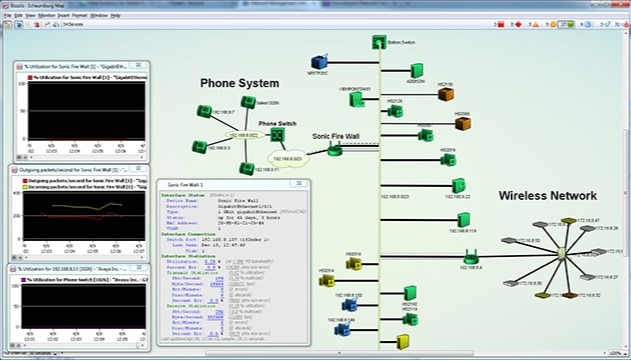

As a result, novel network-theoretic measures (e.g., average path length and proximity ratio) can be achieved based on actual node-to-node distances in the self-organized network topology.
LIMIT NETWORK TOPOLOGY MAPPER SERIES
This research addresses a question, i.e., “what is the self-organizing geometry of a recurrence network?” and provides a new way to reproduce the attractor or time series from the recurrence plot. Interestingly, experimental results show that the self-organized geometry recovers the attractor of a dynamical system that produced the adjacency matrix. Further, a set of experiments were designed to investigate important factors (i.e., dynamical systems, network construction methods, force-model parameter, nonhomogeneous distribution) affecting this self-organizing process.

Then, force-directed algorithms are developed to automatically organize the network geometry by minimizing the system energy. We simulate the recurrence network as a physical system by treating the edges as springs and the nodes as electrically charged particles. The research objective of this article is more » to develop a self-organizing approach to derive the steady geometric structure of a network from the adjacency matrix. Although the adjacency matrix provides connectivity information of nodes and edges, the network geometry can take variable forms.

However, most previous works focus on deriving the adjacency matrix to represent the complex network and extract new network-theoretic measures. As a result, many methods are proposed to construct a network from nonlinear time series, including the partition of state space, visibility graph, nearest neighbors, and recurrence approaches. Network theory leads to a new way to investigate the dynamics of complex systems. With the rapid technological advancement, network is almost everywhere in our daily life. The reliability expression is obtained in symbolic factored form. An algorithm is presented for generating all acyclic t-subgraphs and computing the reliability of the network. Furthermore link failures in the network can be s-dependent. The formula is general and applies to networks containing directed or undirected links. For an undirected network, it is shown the SMT reliability is equal to the overall reliability. Overall reliability is the more » probability that every vertex can reach every other vertex in the network. The sign to be associated with each term is easily computed by counting the vertices and links in the corresponding subgraph. An acyclic t-subgraph is an acyclic graph in which every link is in at least one spanning rooted tree of the graph. The non-cancelling terms in the reliability expression correspond one-to-one with the acyclic t-subgraphs of the network. The formula generates only non-cancelling terms. A new topological formula for the SMT reliability of probabilistic networks. In a probabilistic network, source-to-multiple-terminal reliability (SMT reliability) is the probability that a specified vertex can reach every other vertex. I think Herrlich, Preuß and Strecker (among others) have writen a lot about such "Topological categories", which for them also included the categories of uniform spaces, measurable spaces, convergence spaces and closure spaces, as well as proximity spaces.In all of these we have an equivalence of initial structures (often called "sources") and final structures ("sinks") to define limits.Author = ,


 0 kommentar(er)
0 kommentar(er)
